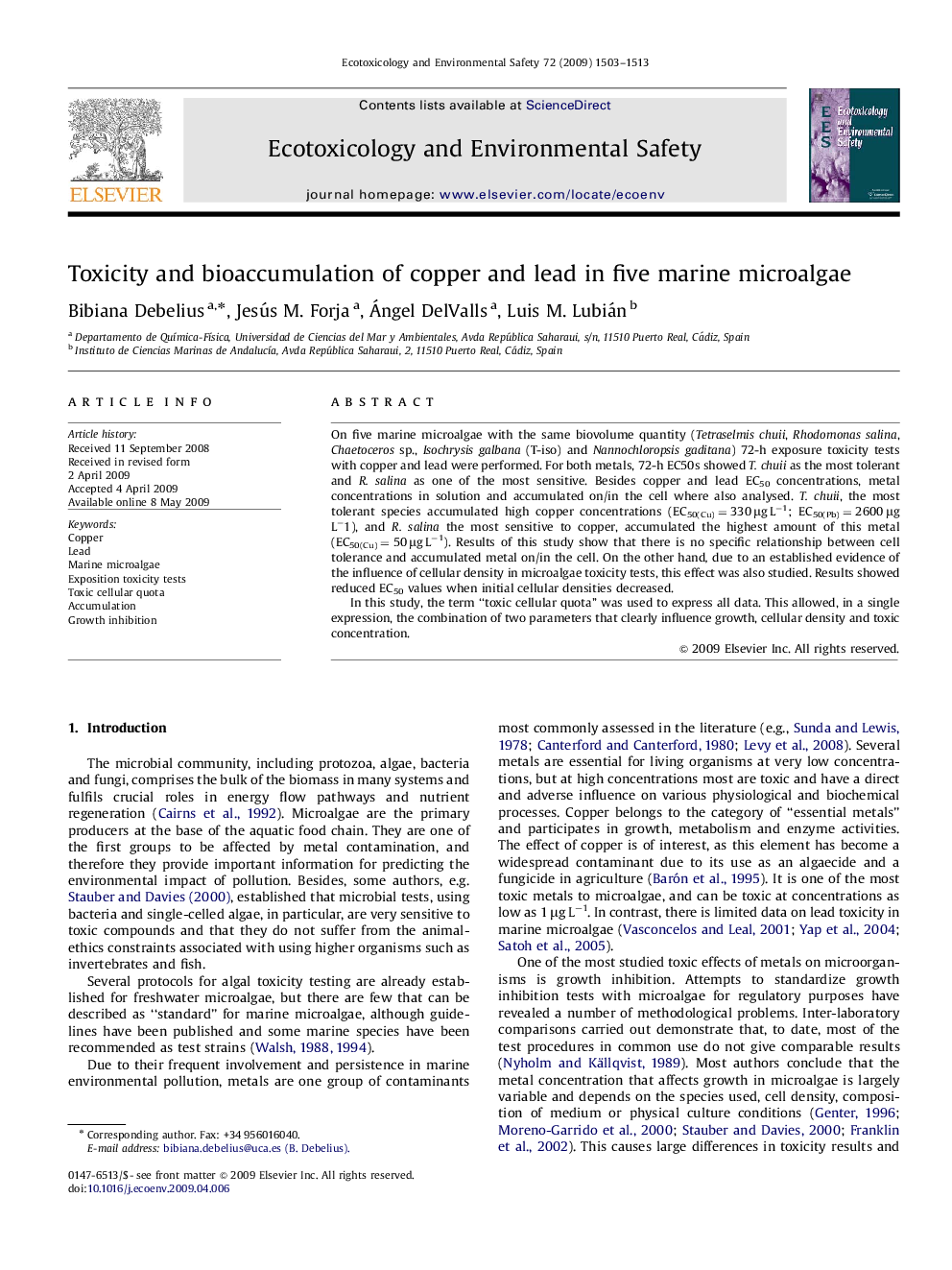| Article ID | Journal | Published Year | Pages | File Type |
|---|---|---|---|---|
| 4421772 | Ecotoxicology and Environmental Safety | 2009 | 11 Pages |
On five marine microalgae with the same biovolume quantity (Tetraselmis chuii, Rhodomonas salina, Chaetoceros sp., Isochrysis galbana (T-iso) and Nannochloropsis gaditana) 72-h exposure toxicity tests with copper and lead were performed. For both metals, 72-h EC50s showed T. chuii as the most tolerant and R. salina as one of the most sensitive. Besides copper and lead EC50 concentrations, metal concentrations in solution and accumulated on/in the cell where also analysed. T. chuii, the most tolerant species accumulated high copper concentrations (EC50(Cu)=330 μg L−1; EC50(Pb)=2600 μg L−1), and R. salina the most sensitive to copper, accumulated the highest amount of this metal (EC50(Cu)=50 μg L−1). Results of this study show that there is no specific relationship between cell tolerance and accumulated metal on/in the cell. On the other hand, due to an established evidence of the influence of cellular density in microalgae toxicity tests, this effect was also studied. Results showed reduced EC50 values when initial cellular densities decreased.In this study, the term “toxic cellular quota” was used to express all data. This allowed, in a single expression, the combination of two parameters that clearly influence growth, cellular density and toxic concentration.
